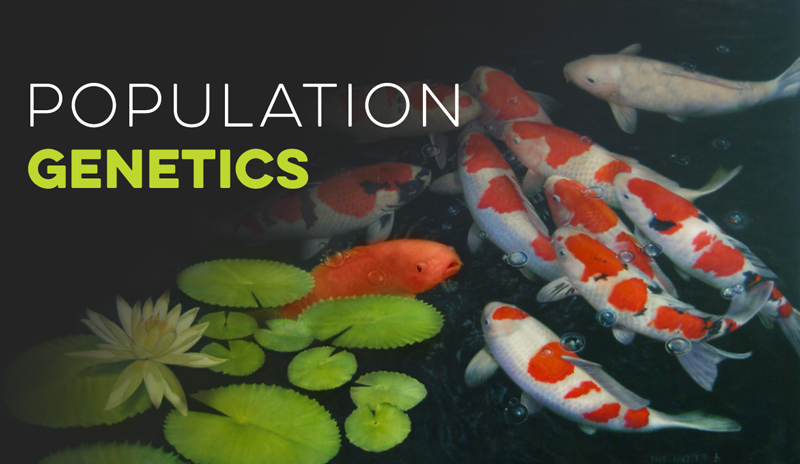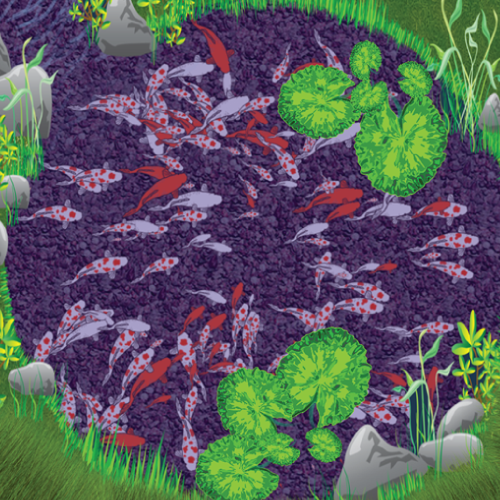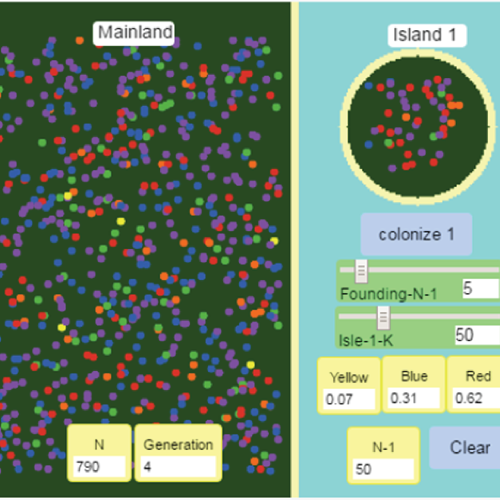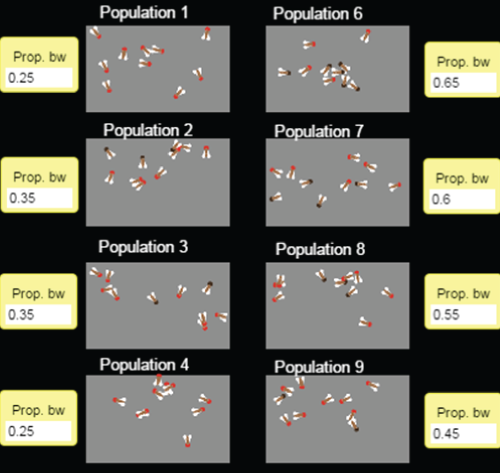
Evolution and Genetics
When Darwin first published his seminal work “On the Origin of Species By Means of Natural Selection” in 1859, Mendel’s work on heredity was largely unknown. Since then, the study of evolution has moved into the “modern synthesis” combining evolutionary theory with current understanding of genetics. In fact, biological evolution is now defined as: changes in allele proportions within a population over time. Models in this section explore various mechanisms that affect allele proportions in populations.

Model 1 – PopGen Fish Pond
This model is an agent-based population genetics simulation. The program contains the tools to conduct virtual experiments violating all the assumptions of Hardy-Weinberg theory (small population, selection, mutation, migration, and non-random mating).
Directions and background information are embedded in the model exercise.
Share this model with others.

Model 2 – Random Genetic Effects
This model illustrates random genetic drift, bottleneck effects, and founder effects. Three incompletely dominant alleles exist in the simulated population (red, yellow, blue) with heterozygous individuals appearing as the blending of the two alleles. You can adjust the mainland population size and put it through a bottleneck. Also, you can colonize two islands off of the coast of the mainland with a random subset of the mainland population.
Share this model with others.

Model 3 – Random Genetic Drift
This model is an adaptation of the classic experiment conducted by Peter Buri (1956), which documented genetic drift in laboratory populations of Drosophila. In the model, ten vials (populations) of flies are held at a constant population size and the proportions of a mutant allele are tracked over generations. The population size and the initial allele proportion can be manipulated.
